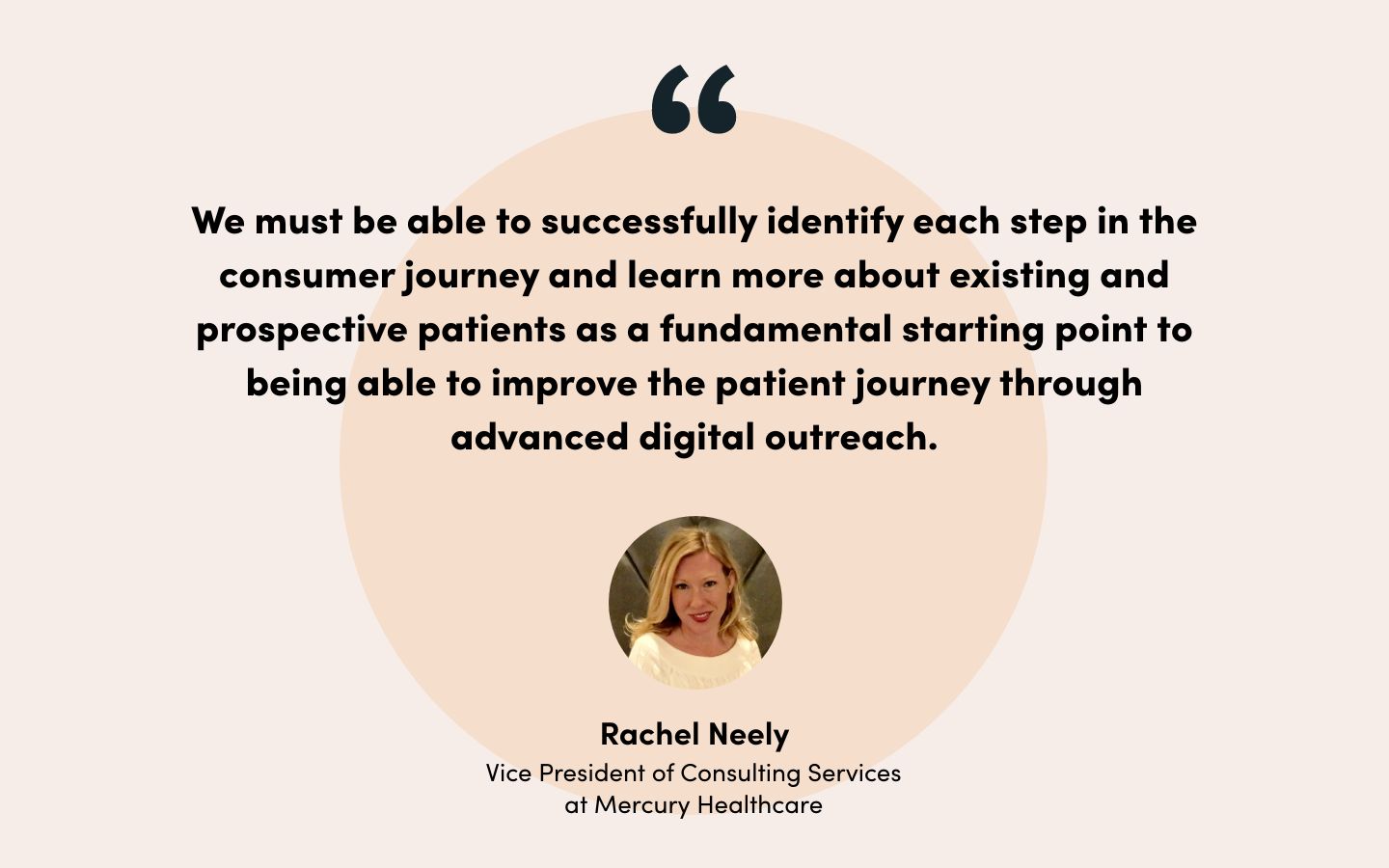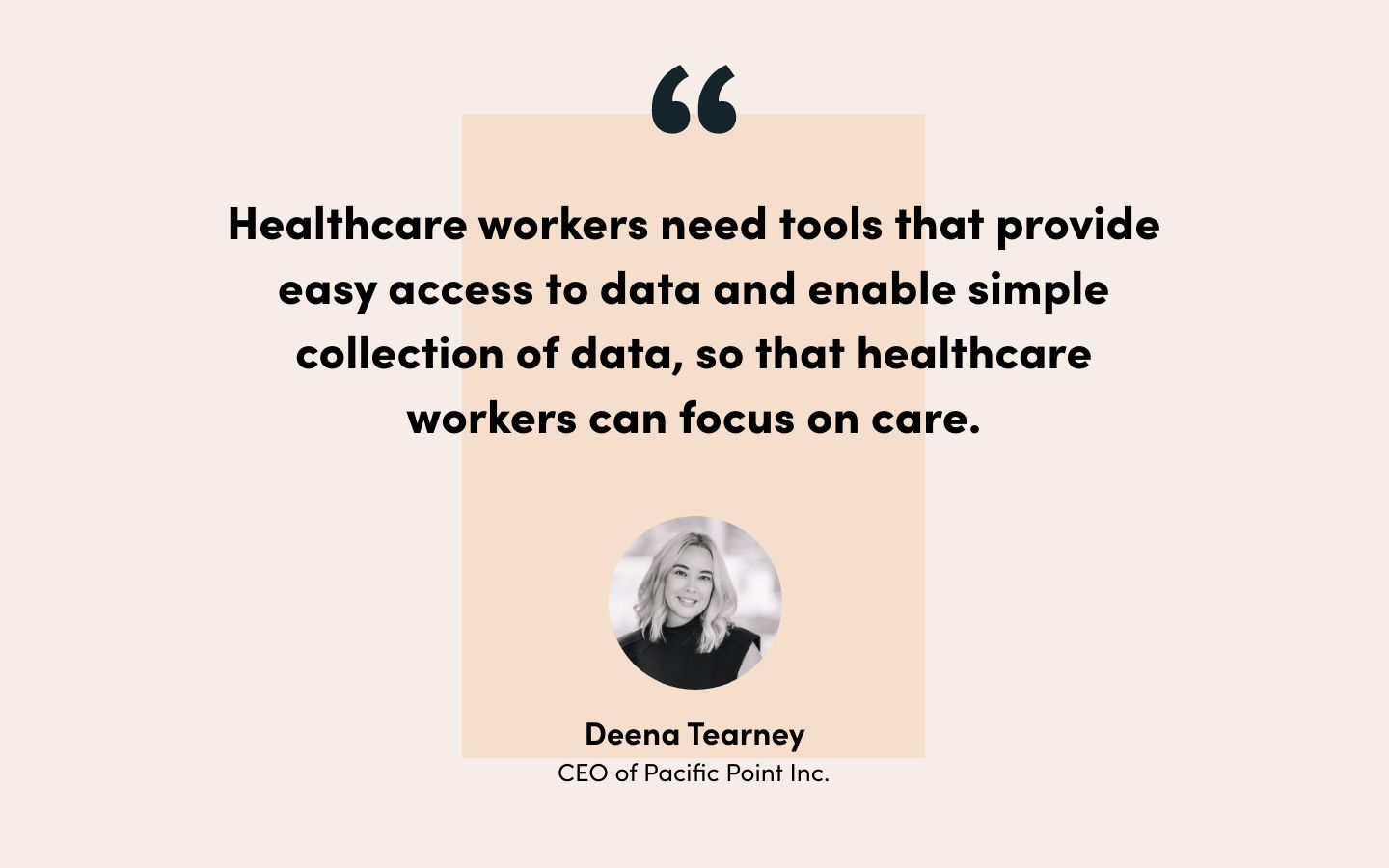Last updated October 25, 2022
In 2023 your patients and employees will expect your healthcare processes to be digital. Electronic medical records and telehealth appointments are becoming standard, but that’s not enough to keep you ahead of the competition. You need to digitize eSignature collection, inventory management, referrals, document creation, testing, and more. But you also need to take bigger steps in ensuring you’re offering patients the digital experience they expect—and need.
To figure out the latest trends in healthcare digitization in 2023, we reached out to a panel of experts from Formstack’s consulting and technology partners to discover how you can transform the way you do business going forward.
Tracking Patient Journey Data
One of the most beneficial ways to digitize revolves around monitoring how you attract and retain patients so you can quickly see what works and what doesn’t. The more you know about how your patients reach you—and why they stay or move on—can change the way you market, interact with patients, and direct your efforts.
Rachel Neely, Vice President of Consulting Services at Mercury Healthcare, notes that “every potential patient has a unique journey that leads them to a health system. It is often the role of the healthcare marketing team to identify which steps a consumer took in their journey before becoming a patient and discover how to encourage continued loyalty and retention. We must be able to successfully identify each step in the consumer journey and learn more about existing and prospective patients as a fundamental starting point to being able to improve the patient journey through advanced digital outreach.”

She recommends formalizing a robust data pipeline to track beyond top of funnel acquisition. For example, after a patient completes a web form or requests an appointment, what was the outcome? Did they show up for their appointment? Why or why not? Were they not able to get in fast enough? What was the appointment for? Did the doctor follow up afterward? Did anyone follow up to reschedule or book a follow-up appointment? Did you send a post-appointment survey? Learning the answer to those questions becomes critical when you’re looking to expand, advertise, or set yourself apart from the competition.
Patrick Scott, Marketing Automation Consultant at R3 Digital, recognizes that their clients “are becoming increasingly aware that they need a strategic platform that links their business throughout the customer journey.” They are seeing the value in having a united front where they can track key metrics that allow them to then craft a better approach to ensuring patients get the care they need when they need it—and that they remain patients in the future.
Patient Engagement is Key
From more targeted patient portal communications to personalized marketing automation led efforts, industry leaders agree that engaging patients will take center stage moving forward. Not only do you need to reach patients where they are, but you need to do so quickly and efficiently in order to keep them invested.
“Digitally-led retention efforts will redefine how organizations engage with patients and consumers,” Rachel emphasizes. Really consider what you can do and improve to keep patients (and employees) happy. Think centralized electronic records so patients never have to sit in the waiting room filling out paper forms again. Think ways to let patients know if you’re running behind. Think personalized follow-up communication to ensure patients received the care they needed.
There are multitudes of ways you can positively improve patient engagement, and the more you implement, the happier your patients will be. But if you don’t know where to start, send a survey to your patients to see what would make the most impact to them. Is it digital check in? Is it being able to sign and submit documents online? Is it online referral requests? Whatever it is, putting it into play will completely reimagine the way you do business.
Related: How to Quickly and Easily Streamline Patient Onboarding
Communication, Communication, Communication
More than just engaging with patients, you need to do an overhaul of how you reach them—and how they reach you. Younger generations don’t want to call in and wait on hold to make appointments or talk to nurses. They want to email, text, or go through online systems. So while you may already have a patient portal, do you have the right options in that system?
As Robert Boyd, Solution Engineer at Kicksaw, puts it, “patients now expect to be able to communicate with care providers when and where they want—whether it's via SMS, through live chat, or in a secure portal—and the most innovative healthcare organizations are investing in technology to provide this kind of experience.”
No more faxing. No more scanning. No more paper forms. Give your patients more control over their healthcare by letting them get access and answers when it works for them.
360-degree Patient Profiles
Siloed data has been a pain point for healthcare organizations for years, and it’s time to finally liberate your data. “When you silo the data between multiple tools, you limit its effectiveness and impact on outcomes for clients,” Brook Joyce, Vice President of US Commercialization at Lumary, says.
Rachel concurs that “the next 5-10 years will finally see the collapse of ‘Data Territorialism’ in healthcare, whereby patient identification will no longer be siloed across departments, service lines, and even healthcare systems...with individual hospitals and health systems finally beginning to rethink how they ‘view’ a patient by building a holistic, 360-degree patient profile and putting an end to internal ‘patient ownership’ competition by streamlining disparate engagement platforms into a single, operationalized source of truth.”
Having a holistic view of a patient allows for better care, and the more systems share data, the better you can communicate and provide for your clients. Plus, it saves your employees time by not having to manually reenter data over and over again or track down missing forms, tests, or other information.
Read Next: The Danger of Data Silos, Part 1: Where Do They Come From?
Patient Portal Training Campaigns
With the reliance on patient portals increasing, there will be clients who struggle with technology. As Patrick puts it, “implementing a portal comes with its own challenges, the adoption rate amongst older healthcare users being a particular concern. We are already seeing clients who have implemented campaigns to address this, and it will likely be a big area for growth throughout the next decade.”
To ensure older patients receive the same access to care as others, create a plan to include training resources and additional help for those who struggle to navigate your system. Also, look at where you can eliminate or combine excessive software so patients only have to interact with simple, straight-forward software.
Additionally, Deena Tearney, CEO of Pacific Point Inc., adds that it’s not just older patients who need easy patient portals. Your staff, employees, and doctors do too. “Healthcare workers need tools that provide easy access to data and enable simple collection of data, so that healthcare workers can focus on care.”
The more difficult software is to implement and train on, those are hours your patients are losing out on.

Audit Your Software and Processes
Adam Bocik, Partner at Evergreen Results, takes the idea of combining software a step further. “With so many siloed pieces of software, [our customers] find themselves trying to balance what has been digitized with other manual processes, and then further supplementing tech solutions with manual processes trying to get them all to work together.”
It’s not enough to simply combine software. You have to truly audit all of your software and processes to see what is still manual and what is handled electronically—because it does no good to eliminate technology systems if you’re still doing other processes manually that one central solution could tackle.
Spartak Kabakchiev, Director of Integration Platform Business Development at Quickbase, says auditing can be the first step, but you also need to perform a Root Cause Analysis of why your tools and systems don’t support the needs of your workflow. Where are the gaps? Do these gaps have to be filled manually, or is there a better digital solution? And what’s stopping you from implementing it? Not enough time? Cost? Worried about training or lack of customer support?
It’s all about searching out the tools that will best fit your organization and patients. Some providers might be able to work with you on the cost in exchange for testimonials or other feedback. Another might have the best training tools and offer personalized implementation support. And you can even save time by researching what your competition is using. But keep in mind that they may be behind the times.
You can also often trial software. So don’t be afraid to jump into a few systems to see what’s easy to set up and navigate and what’s not. Overall, when selecting your software, it comes down to auditing and reviewing the systems you already have in place, mapping your ideal workflows, and seeing what’s available in the market to help you combine siloed data and provide the best patient outcomes with the least amount of stress (and IT teams) involved. It may take time and research, but it will pay off quickly for your entire organization.
.jpg)
At-Home Wearable Technology
As more and more healthcare technology is becoming available over the counter and paired with smartphones, it’s imperative that you keep your position as trusted experts by having systems and processes in place to recommend, monitor, and provide feedback on wearable technology reports.
“Wearables are already tracking our heart rate, BMI, steps, and much more. As more data is collected and we combine it with other sources, like personal DNA testing, artificial intelligence will be able to ‘watch’ for certain indicators and provide earlier detection,” Adam says. So be ready to not only recommend the best ones to patients, but to deal with a barrage of questions about the accuracy of and benefits of different brands.
Read Next: 5 Healthcare Predictions for the Year 2030
At-Home Testing
In addition to wearable tech, JoAnne King, Director of Healthcare Solutions at Coastal Cloud, and Jim Stalder, Chief Technical Architect at Coastal Cloud, project that “direct-to-patient care will continue to grow dramatically. An example of this might be laboratory and diagnostic testing. COVID-19 has accelerated the need for at-home testing, but 2021 saw many new organizations that offer at-home testing for food sensitivity, allergies, thyroid, fertility, etc. Individuals taking charge of their own health care and the related diagnostic testing will bump up against traditional in-office testing performed by clinicians. Will physicians accept the results of at-home testing, or will redundant tests be performed for a few years until results are standardized and more easily accessible?”
The time is now to start putting plans in place to address this growing trend. Will you require patients to upload at-home test results? Do you have the technology in place for them to do so? How can you ensure that those tests were in fact taken by your patient and not someone else? Did they even perform the test correctly? Again, start planning now to know how you will handle these and other situations that may arise as the healthcare landscape continues to change.
Overall, the best way to care for your patients is by ensuring you have the most up-to-date technology so you can focus on patient interaction instead of IT, billing, and the other tasks that take up your day.
Digitizing manual processes at your healthcare facility can have a major ROI. Discover how the CEO of InHouse Physicians improved patient data collection and saved $100,000 thanks to digital workflows.












